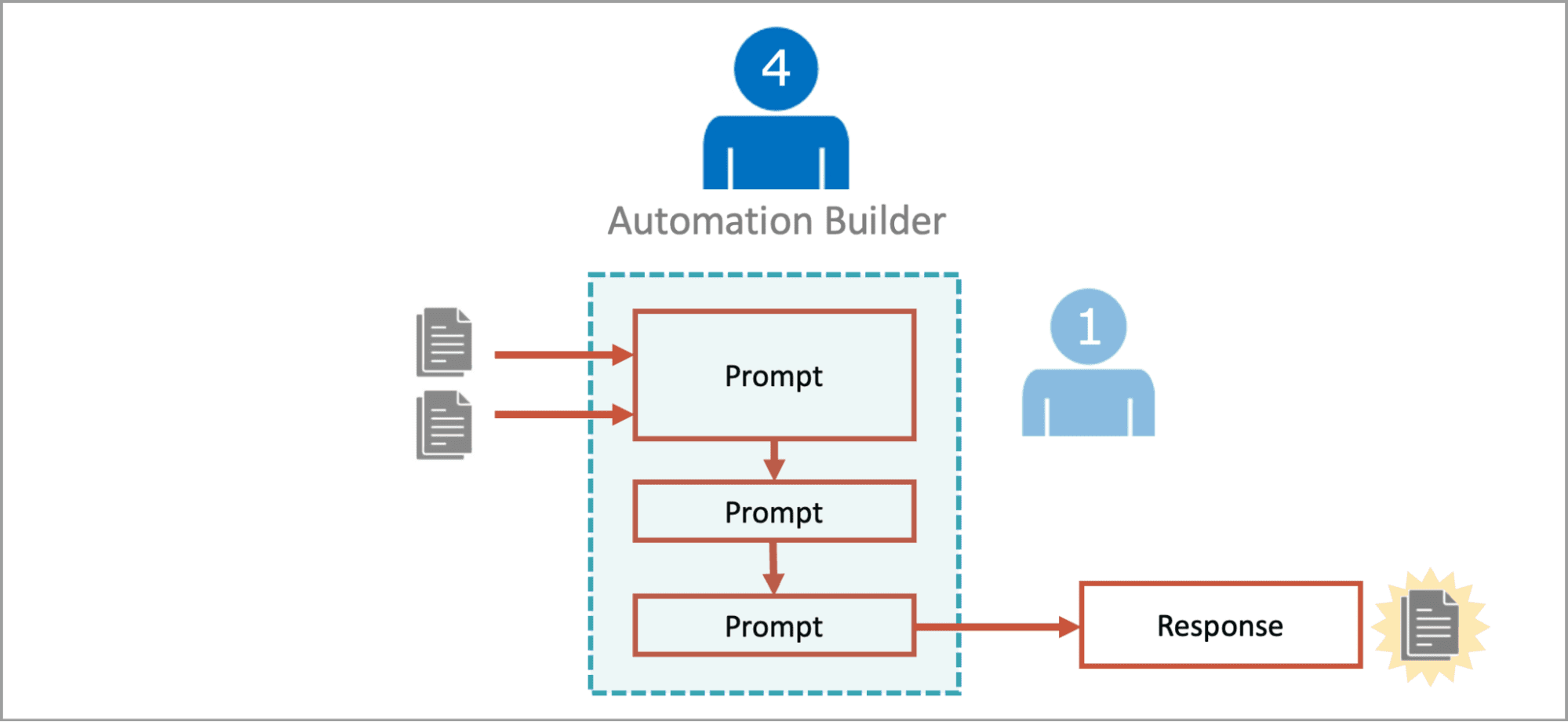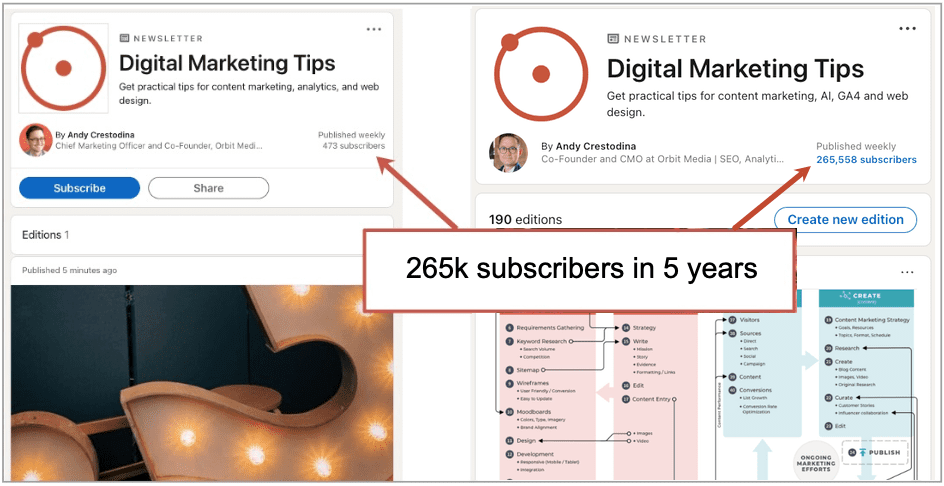How Neuroinclusion Builds Organizational Capabilities
Ben Miners/Ikon Images Companies have made great strides in neuroinclusion since 2013, when SAP announced its Autism at Work program. The first major corporate initiative of its kind, it was soon followed by programs at Microsoft and EY.1 As the respective founders of these programs, Jose, Neil, and Hiren have seen firsthand that their companies […]

Ben Miners/Ikon Images

Companies have made great strides in neuroinclusion since 2013, when SAP announced its Autism at Work program. The first major corporate initiative of its kind, it was soon followed by programs at Microsoft and EY.1 As the respective founders of these programs, Jose, Neil, and Hiren have seen firsthand that their companies have benefited greatly from neuroinclusion, and from much more than just filling jobs. The broader ways that their neuroinclusion initiatives are changing their organizations are much more important than the direct benefits from the individual contributions of program participants (though those are also real). This is especially true as they incorporate what they have learned from neurodiversity employment (NDE) into mainstream business practices to build organizational capabilities.
The concept of neurodiversity is simple: There is naturally occurring variation in human brains, which results in differences in the way people think. Almost 1 in 5 people in the world is neurodistinct, meaning they live with differences like autism, dyslexia, attention deficits, or other “neuro” conditions. Though we’ve historically labeled them “disorders,” which implies a problem, people who have them possess skills and talents, some scarce, that organizations need. People who think differently don’t need fixing; they often thrive because of these neurological differences, not in spite of them. And their organizations can harness the many benefits (some unexpected) of different ways of thinking.
While there have been — and will be — challenges with NDE, we are far better positioned to succeed than in those early days now that we have past efforts to build upon. Several of us have been hands-on leaders in neuroinclusion efforts. In 2004, Thorkil founded Specialisterne, a social enterprise that developed a model for placing autistic people long excluded from the labor force into good jobs that employ their talents fully. In 20 years of effort, Specialisterne has, directly or indirectly, generated more than 20,000 job placements and trained more than 15,000 employment professionals in more than 500 companies across 25 countries.2 Specialisterne’s vision and alternative (less interview-based) talent assessment methods greatly influenced Hiren, Neil, and Jose as they developed programs at EY, Microsoft, and SAP. (See “What We Did at EY, Microsoft, and SAP.”)
Based on our experiences as the front-line leaders of three of the largest and longest-standing programs, and our analysis as researchers who began studying these activities in 2007, our goal here is to describe the progress we’ve seen and explain why it matters — and not just to companies already tapping neurodiverse talent pools. Because of these initiatives, companies are building better products and services, adding new capabilities, and learning lessons about the future of work — how people’s talents can be better harnessed to realize much greater competitive, human, social, and societal value.
Neuroinclusion as Capability-Building
Our collective experience in establishing and running neuroinclusion initiatives has shown that they can yield the following organizational benefits.
More effective employees with upgraded skills and abilities. Neurodistinct job candidates are often overlooked. When SAP sought out its first neurodistinct cohort to hire at its U.S. locations in 2014, the group of candidates was both significantly larger than anticipated and possessed rich credentials in areas of great interest to the company. Many had graduated with distinction; some even held patents. But none had been able to find employment after graduating, because they did not interview well.
Filling jobs that otherwise would have gone unfilled is an obvious way that neuroinclusion initiatives improve the capabilities of our organizations. Further, the people who have been hired into some of these positions have not been just good — they’ve been very good. Consider some internal metrics from the three programs: Retention rates for neurodistinct hires are very high, in the 90%-plus range.3 Program participants have contributed important innovations, including patents; they have won awards and generated big cost savings. Neurodistinct hires at Microsoft have produced code that is used by millions of customers daily in Windows and Xbox software.
While it would be unfair to expect savantlike abilities from every neurodistinct employee, some think differently in a variety of valuable ways. For example, there is scientific evidence that autism is associated with pattern recognition and memorization abilities, dyslexia with visual and creative abilities, and ADHD with entrepreneurial inclinations and skills.4 By providing accommodation and support to neurodistinct employees, EY, Microsoft, and SAP enable strong performances from them — and the companies expect to see such results. Helping the significant numbers of neurodistinct employees who are already on staff become more effective upgrades the companies’ capabilities.
Better user insights that lead to better products and services. One motivation common to EY, Microsoft, and SAP in creating their NDE programs was to build workforces that reflected the diversity of their customer bases, understood customer needs, and could thus better serve them.
“By having people with disabilities in the fabric of our company, you’re building in a diverse workforce that then represents the 1 billion people with disabilities out there,” said Microsoft’s chief accessibility officer, Jenny Lay-Flurrie. “Anything that we do will work across the spectrum of being human.” The Blur feature in Teams, she noted, was the brainchild of a deaf engineer whose heightened visual sense made background details distracting. Because neurodistinctness is, to an important extent, about how sensory information is processed cognitively, neuro differences offer particularly useful product and service insights about interfaces and usability.
Enhanced innovation capabilities. According to innovation theory, an innovation process needs to enable people to generate ideas that are different from past ones and then discern the value in these new ideas well enough to decide which ones to work on further.5 Both are challenging for established organizations. People tend to get stuck in habitual ways of thinking, so it’s easy to see why team members who think differently might help in this process.
An autistic employee who joined SAP through its neurodiversity hiring program became the first ever individual (non-team) winner of the Hasso Plattner Founders’ Award for an innovation that radically simplified a financial accounting process, reducing a key cycle time from days to 20 minutes. This example is impressive but not unusual; different perspectives that arise from thinking differently often enhance innovation capabilities.
There is growing research to explain why this might be the case. A study conducted by Lars Bo Jeppesen and Karim Lakhani on how successful solvers of science challenges differ from their less successful colleagues identified what they called “marginality” as a key factor.6 The innovations they studied were less likely to arise from the people closest in training, background, and experience to the challenge domain and were more likely to arise from people who were more peripheral, both socially and in expertise and ways of thinking. Team members who think differently can help us break stale thinking habits that limit an organization’s creativity.
Heightened visibility into problems, and stronger motivation to fix them. Neurodistinct traits historically considered dysfunctional can sometimes be conducive to making organizational improvements. Some neurodistinct people have such a preference for regularity and routine that they may be compelled to create order out of disorder or feel stress when confronted with illogic.
At one manufacturing company we studied, a neurodistinct warehouse employee started having stress reactions when he was required to execute some established operating processes. The company was more than 100 years old, and some processes were executed the way they had always been rather than for a good business reason — and in a few cases, they didn’t make much sense at all. The more this warehouse employee learned about operating processes, the more problems he discovered and the more stressed he became. Alleviating his stress became a motivation to improve processes. The cumulative magnitude of improvements was considerable.
Another common neurodistinct trait that has often been perceived negatively is insensitivity to social cues and context. This sometimes leads to bluntness in communication and can be perceived as lacking diplomacy, speaking out of turn, or being rude. Honest but overly direct communication can result in hurt feelings and necessitate some coaching by the employee’s supervisor. On the other hand, this honesty and directness in communication sometimes translates into a willingness to speak up about a problem or inefficiency that needs attention when others are reticent. To an employee with this tendency, communicating an issue to someone who can do something about it may be more important than adhering to the unspoken rules of social hierarchies. By incorporating feedback from neurodistinct hires — even if expressed in unconventional ways — organizations have been able to achieve better results in both quality and productivity.
For example, the very first cohort of the neurodiversity program at EY noticed a problem with their new-hire training materials, flagged the issue, and subsequently rewrote the materials. Their solution substantially reduced the time such training takes and is estimated to have saved the company over $1 million annually in associated expenses. Training managers suspected that the problem flagged by the neurodistinct employees had been noticed by past new hires who, with their greater social sophistication, may have reasoned that correcting their new company’s training materials in their first week on the job might not be the politically expedient thing to do. We suspect that all of our organizations could benefit from a little more candor. Coaching people through the communication rough spots is worthwhile, given the potential to help us do things in better ways.
Better management. In our own companies and research initiatives, we frequently hear, “This program has made me a better manager.” This suggests that neuroinclusion may build general management and supervisory skills, which can reasonably be assumed to provide broad benefits to an organization. The job of supervising a neurodistinct employee focuses managers on the details of how they supervise and prompts them to develop supervisory aspirations in areas like clarity of communication and expectation setting, flexibility, and a willingness to learn. Supervising a neurodistinct employee forces supervisors to ask questions like “What are the conditions I need to create to activate this person’s talent to the maximum degree?” Asking and working on answering this question is very developmentally valuable for managers — and it’s a good question to ask about all employees, not just those who enter the organization through neurodiversity programs. The attributes that make a supervisor great for neurodistinct employees are the attributes of a great supervisor for all.
Increased psychological safety. A side effect of the corporate neurodiversity employment efforts at EY, Microsoft, and SAP is that people who have already been working for those companies, who entered the organizations through mainstream channels, are now disclosing their own neurodistinct statuses at a record pace. Historically, neurodistinct people have perceived more risk than value in disclosing their neurodistinctness and have masked their conditions to avoid being singled out unfavorably. Such behavior can negatively affect people’s work performance, given that it requires considerable effort and compromises their emotional well-being.7 Today, traditionally hired employees who self-identify as neurodistinct significantly outnumber those who have arrived through neuroinclusive hiring programs. This rapid increase in disclosure following the implementation of neuroinclusive measures (such as awareness and supervisor training) indicates higher psychological safety, which leads to better emotional well-being, as well as broad learning and performance gains, among employees.
Aligned values. A growing body of research suggests that it matters to employees, especially younger ones, that the work they do on behalf of their companies is meaningful and aligned with their values.8 We’ve seen evidence that NDE helps with this. SAP and EY have documented that employee engagement increases among people who are in proximity to participants in companies’ programs — not just among members of a team, but even among people who know about the program and just happen to be sitting near participants. Although the reasons for this relationship are not yet fully understood, we speculate that it may be because employees are inspired to work harder for their company when they perceive it as “doing good,” or simply because it signals that differences are accepted and accommodated within their organizations. One highly sought-after job candidate accepted a position after learning about the organization’s NDE initiative because it aligned with his personal values. Such programs help recruit people who want to work for companies that “reflect humanity” (as Lay-Flurrie has said) or can show evidence of “building a better working world” (as EY’s mission statement puts it). Partners and customers are drawn to work with companies whose actions work toward societal improvements, presumably for similar reasons.
Progress and Challenges in Maintaining Momentum
EY, Microsoft, and SAP are far from the only companies driving progress in neuroinclusion. Seven years ago, DXC Technologies (then called Hewlett Packard Enterprise), EY, Ford, JPMorgan Chase, Microsoft, and SAP banded together to start an information-sharing group, the Autism @ Work Roundtable (since renamed the Neurodiversity @ Work Roundtable). Today, there are 60 roundtable members. Many are large corporations, such as Deloitte, IBM, Goldman Sachs, Dell, and Walgreens, but some are smaller enterprises and government agencies. Although autism was the early focus, the roundtable and member companies now include people with other conditions that can hide talent, such as ADHD, dyslexia, and anxiety disorders. Through their dedicated hiring program efforts, roundtable companies have hired more than 3,000 talented, neurodistinct job seekers.
The quantity of inquiries and requests for assistance that we’ve seen suggests great potential for future growth. Specialisterne has engaged with more than 500 employers to set up neuroinclusive programs worldwide. EY, Microsoft, and SAP have had hundreds of contacts with enterprise employers looking to learn how to start such programs or do more to support their existing employees, and they have supported more than a thousand other organizations.
Still, organizational change is hard, and migrating improved practices out from our neurodiversity “lighthouse” programs — small-scale parallel tracks separated from mainstream practices — is an ongoing opportunity. Perhaps the biggest challenge still to be overcome is moving learning from programs into mainstream organizational practices. Program leaders are fond of saying that success will be fully achieved when dedicated employment programs are decommissioned because neuroinclusive practices have gone mainstream. Organizations that introduce neuroinclusion initiatives tend to create a parallel employment on-ramp and set of employment practices specifically suited to neuroinclusion. There is good logic in this approach: It gives organizations a chance to experiment and learn before making broader changes. But the compartmentalization that facilitates experimentation and learning can make it harder to integrate neuroinclusion into mainstream practices. Our work on how to best expand practices from the lighthouse is ongoing, a challenge in and of itself.
Neuroinclusion Advice for Leaders
If you’d like to build capabilities in this way and bring the benefits of neuroinclusion to your company, we recommend taking the following actions.
- Educate yourself about neurodiversity. Knowledge makes everything less intimidating. This is not rocket science, and the world benefits when people know more about the lived experiences of others. Share your knowledge with others in your organization.
- Reflect. Roughly 20% of any population is neurodistinct. This is true of your clients and customers, and the communities from which you recruit. Does the way you manage take this fully into account? What opportunities are you missing?
- Avoid stereotyping. Research suggests that knowledge without experience can lead us to stereotype people rather than treating them as individuals.9 The expression of neurodistinct conditions varies widely, so it is important to remember that every person is an individual.
- Seek advice. There is a widely available body of knowledge on how to design and run NDE programs that has been distilled from the practices of many organizations, as well as a broad network of people who have experience in building programs and are willing to share their knowledge. Those of us who have gone down this road have offered advice to literally hundreds of others. Some of us also offer more extensive support services, depending on someone’s level of need. The “Neurodiversity @ Work Playbook,” a distillation of the advice from our companies and others, is a great place to start.10 Enlisting an expert and experienced support partner can help accelerate your progress on this journey. (Specialisterne and EY offer this kind of support, but there are other organizations that are also excellent.) Make use of us, our advice, and other available knowledge, guidance, and resources.
- Start with your own team, and create your own lighthouse. You already have neurodistinct employees, whether you know it or not. Whether they disclose their conditions is their choice. But there are many things a manager can do to make the organizational environment seem safer for those who do disclose.11 Start with small efforts. You don’t have to announce anything — just give it a try, on a small scale, and see where it takes you.
- Rethink your organizational culture. In particular, consider what it suggests about “fit” in jobs, teams, and the culture. Too-simple notions of fit and superficial behavioral expectations (like looking people in the eye) have often been reasons why neurodistinct people have been excluded. Thear Suzuki, a global partner and an EY senior leader, describes the result of some of her rethinking: “The question to ask now is not ‘Does this person fit?’ but rather ‘Is this person additive to our culture?’” Also, build into your culture the idea that people should not assume things based on group traits. If you’ve met one neurodistinct person, you’ve met one neurodistinct person.
- Secure and maintain executive support. In explaining and justifying neuroinclusion activity, rely on arguments about positive benefit to the business. Business value is the currency of competition. Neuroinclusion does create business value, so we might as well say so. Be wary of trait-based stereotypes and the assumption that neurodistinct candidates should somehow contribute more than others.
- Reexamine business-as-usual practices. Make sure they work for all team members throughout the organization. This includes talent assessment methods, job designs and settings, in-job support practices, how training is designed and facilitated, supervision, the way meetings are run, professional development processes, and how company events are staged. Microsoft encourages managers to use team agreements that define how team members will work together. Having guidelines for how your team works best together can support neurodistinct employees and usually benefits everyone.
- Integrate neurodiversity management into your leadership development programs and processes. Use neuroinclusion to build supervisory capabilities. Think early and often about how practices developed within neurodiversity programs will be integrated back into mainstream practice.
- Support neuroinclusion within your organization and the community. Encourage neurodiversity support in volunteer efforts, schools, and public activities. Make your organization a flag bearer for neurodiversity opportunity. This might just make you a preferred choice for partners and your future workforce.
When you think of neuroinclusion as a path to greater organizational capability, as we have come to, you quickly realize that this is not just a feel-good or good-corporate-citizenship initiative, or a way of filling a few more jobs. It’s an organizational effectiveness magnifier that can have a positive impact across the enterprise. Upgrading employee skills; discerning new user insights that lead to better products and services; enhancing general innovation and management abilities; learning faster through greater psychological safety; and aligning values to make your people more engaged and motivated — these are factors that lead to greater competitiveness. They are imperatives, in business terms.
We have really just arrived at the NDE 2.0 starting line. There is still much to do to scale the benefits more widely, but we know a lot more than we did a decade ago about how to do this. We invite you to join us in achieving these gains. There is a learning curve. Don’t get left behind.















































































































![Best Areas in Gurgaon for Investment - PropXchange Property Listings [2025 Guide]](https://newsquo.com/uploads/images/202505/image_430x256_6819c3632026c.jpg)







































